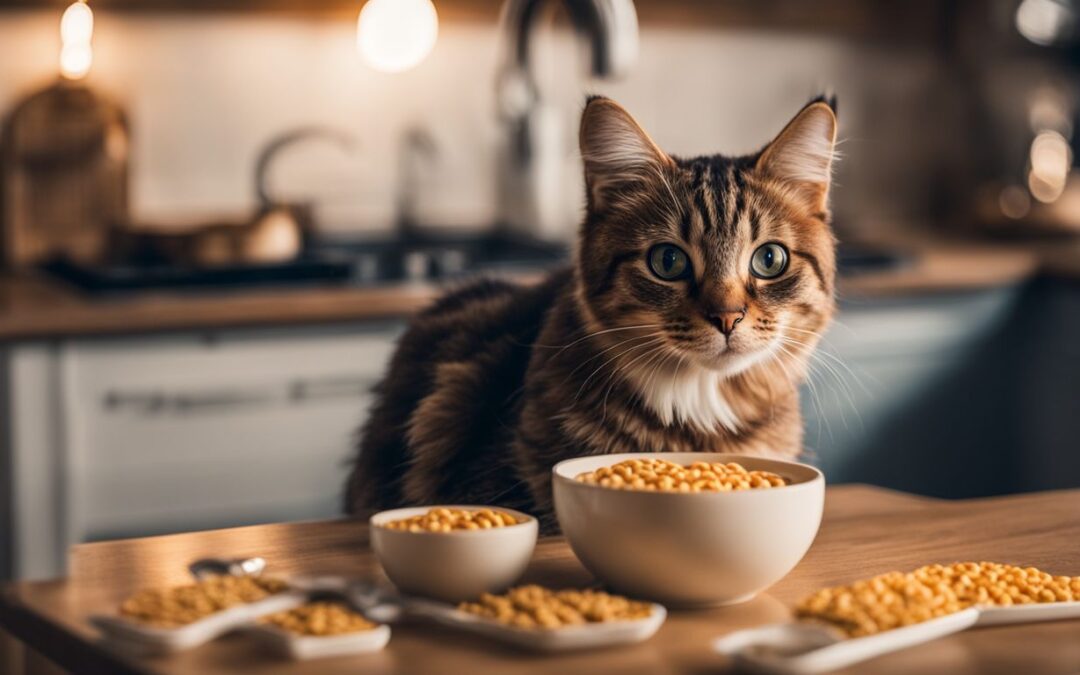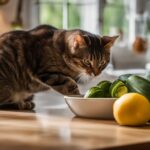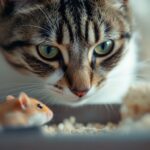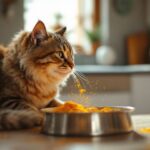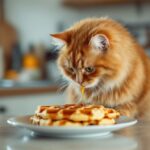Have you ever caught yourself pondering whether those round, crunchy Cheerios could double as a snack for your fur baby? I certainly have had my moments of curiosity. After some thorough investigation, I uncovered that while regular Cheerios don’t pose a toxic threat to cats, they aren’t an ideal choice for feline nutrition either.
In this article, we’ll dive deep into the world of sharing human breakfasts with our cat companions. Stay tuned because it’s about to get interesting!
Key Takeaways
- Cats can technically eat Cheerios but it’s not recommended because they lack the nutrients cats need.
- Chocolate Cheerios and honey nut flavors are harmful to cats due to toxic ingredients or too much sugar and fat.
- Too many Cheerios could lead to health problems in cats like diabetes or obesity from high sugar content and grains that aren’t part of their natural meat-based diet.
- Healthy treats for cats include small pieces of cooked meat, low – lactose cheese, safe fruits and veggies, and specially made cat treats.
- Always check with a vet before changing your cat’s diet to ensure you meet all their nutritional needs.
Can Cats Consume Cheerios?
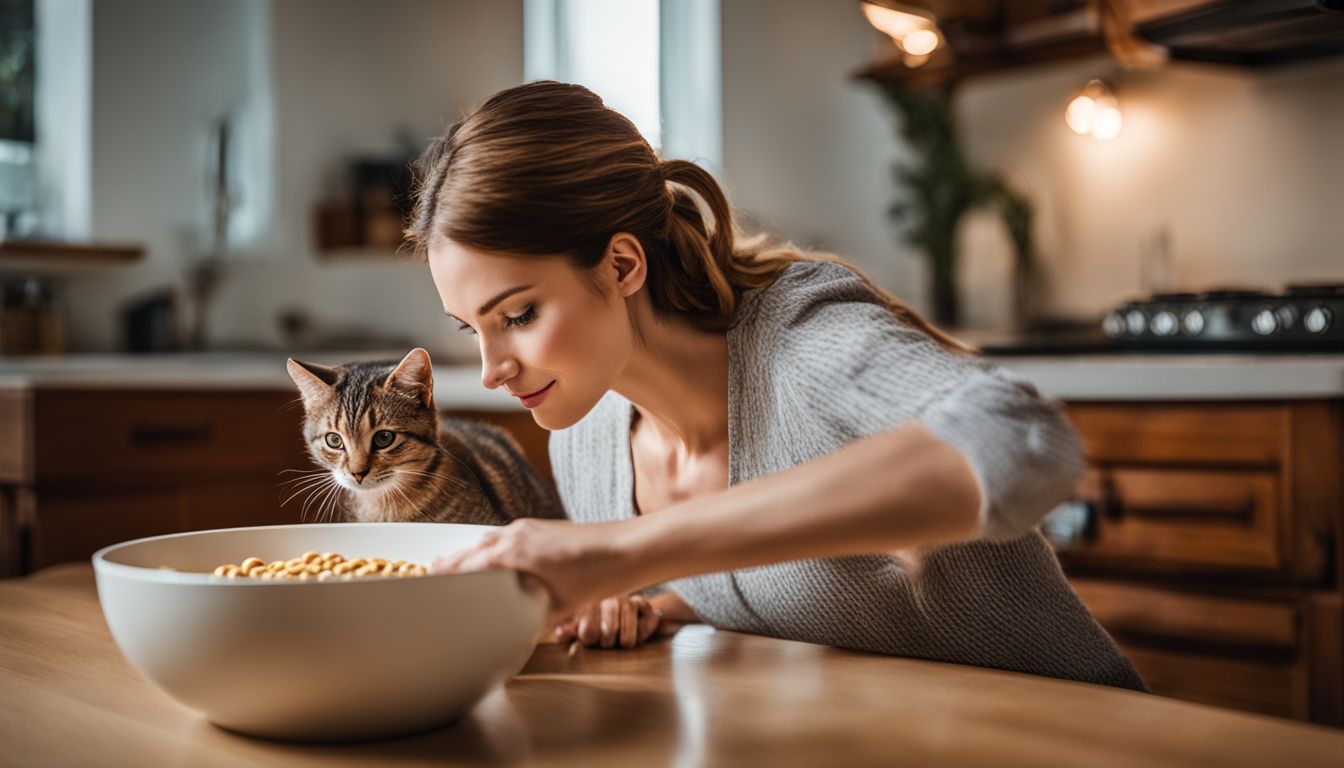
So, can our feline friends snack on Cheerios? The short answer is, they technically can but it’s not a good idea. Regular Cheerios won’t harm your cat right away, but don’t offer them as a treat.
They lack what cats need to be healthy. Now, chocolate Cheerios are a no-go. They have theobromine—something very bad for cats. And honey nut flavor? Too much sugar and fat there.
Imagine giving something to your pet that doesn’t help them at all. That’s what happens with Cheerios in their diet—it’s like empty calories for humans. Eating lots of these over time could upset your cat’s stomach or worse, lead to being overweight and other health issues.
There’s really no benefit for them here; you want treats that keep them happy and healthy! Let’s think about what risks might come from feeding cats this popular breakfast cereal….
Potential Health Risks of Cats Consuming Cheerios

Feeding cats Cheerios could lead to potential health risks. Issues such as the sugar content and grains found in Cheerios may not be suitable for feline consumption.
Sugar Content
Cheerios may seem like a harmless treat for your furry friend, but let’s talk sugar. These little circles can pack more sweet stuff than you’d think. Cats don’t need sugar in their diets.
In fact, too much of it can lead to scary things like diabetes and obesity. Imagine feeding them spoonfuls of what might as well be tiny doughnuts – not the best idea, right? Sure, a cat nibbling on a Cheerio once in blue moon isn’t the end of the world but making it a habit could set them up for health issues nobody wants.
Now onto grains…
Grain Content
So, moving on from the sweet stuff… Now let’s chat about the grains in those circles we love. Cats are obligate carnivores. This fancy term means they need meat to stay healthy, not plants or seeds found in lots of foods like Cheerios.
These grains don’t do much for our feline friends. They don’t help their muscles grow strong or keep their hearts ticking right.
Grains can also mess with a cat’s stomach and make them feel pretty lousy. Imagine having an upset stomach just from breakfast! Over time, this can lead to bigger problems like not digesting food properly or even getting a bit too chubby (obese).
So, while sharing a bite might seem kind, it’s better to stick to treats made for cats that tick all the nutritional boxes they need.
Considerations Before Feeding Cheerios to Cats
Before giving your feline friend Cheerios, it’s essential to consider their natural diet and potential health implications. Instead of resorting to Cheerios, opt for healthier treat options and foods that align with your cat’s dietary needs.
Understanding a Cat’s Natural Diet
A cat’s natural diet mainly consists of high protein and low carbohydrates. This includes meat, organs, and bones that provide vital nutrients such as taurine, arachidonic acid, and vitamin A.
As obligate carnivores, cats need a diet primarily made up of animal-based proteins and fats. It’s essential to avoid grains or processed foods like Cheerios in their regular diet to prevent nutritional deficiencies and health issues.
When determining what to feed your cat, consulting with a veterinarian is crucial for guidance on providing a balanced and appropriate diet.
The aspect of understanding a cat’s natural diet is paramount when considering the nutritional needs of our feline friends. Cats require specific nutrients found in animal-based proteins that are crucial for their overall well-being.
Healthier Treat Options for Cats
When it comes to treating your furry friend, it’s important to remember that cats have specific dietary needs. Here are some healthier treat options for your feline companion:
- Small chunks of cooked meat or fish without any bones – These provide high-quality protein and important nutrients for your cat’s overall health.
- Low-lactose cheese – Cats can enjoy a small amount of cheese as a special treat, but remember that some cats are lactose intolerant, so moderation is key.
- Safe fruits and veggies like steamed carrots or green beans – These can be a great source of fiber and vitamins for your cat’s diet.
- Commercially available cat treats – There are specially formulated treats designed to meet your cat’s nutritional needs while still being tasty.
These options ensure that your pet gets the best nutritional value without compromising their health.
Alternative Safe Treats and Foods for Cats
When it comes to treating your cat, it’s important to consider healthier alternatives. Here are some safe and nutritious treats and foods for cats:
- Lean Meat: Small portions of cooked, plain meat such as chicken, turkey, or beef can be a tasty and protein-rich treat for your feline friend. Avoid giving them any bones as they can splinter and cause harm.
- Fish: Cats often love the taste of fish, and small amounts of cooked tuna, salmon, or whitefish can be a healthy occasional treat. However, make sure there are no bones in the fish as they could pose a choking hazard.
- Safe Fruits and Veggies: Small pieces of cat-safe fruits like cantaloupe, watermelon (seeds removed), or steamed vegetables like carrots or green beans can add variety to their diet while providing essential nutrients.
- Low-Lactose Cheese: Cats may enjoy a small amount of low-lactose cheese as an occasional treat due to its lower lactose content compared to regular cheese. It’s essential not to overdo it due to their potential lactose intolerance.
- Commercial Cat Treats: Look for specially formulated cat treats that are low in calories and designed to promote oral health while providing necessary nutrients for your pet’s well-being.
Conclusion
Cats should not eat Cheerios as it lacks nutritional benefits. Different flavors like chocolate and honey nut can be toxic to cats. Feeding cats healthy treats that fit their dietary needs is the best choice for their well-being.
Understanding a cat’s natural diet is essential before considering alternative safe treats or foods. It’s important to prioritize the health of our pets by providing them with proper nutrition and care.
FAQs
1. “So, can my cat actually munch on Cheerios, or is that a no-go?”
Well, here’s the scoop – while your kitty might give you those big eyes begging for a taste of your Honey Nut Cheerios, it’s not the best idea. Cats don’t really need cereals in their diet… like, at all. Their bodies are more about meat and less about grains.
2. “But wait – what if it’s just a tiny bit? Harmless snack or secret danger?”
Ah, the old ‘just a little bit’ argument. Here’s the thing: even though plain Cheerios might seem harmless (they’re not chocolatey or packed with caffeine), they don’t offer any real nutrition for your feline friend. Plus, some cats can get an upset stomach – think nausea – from foods that aren’t part of their usual diet.
3. “What about milk? I’ve seen cats in cartoons love it! Can I make a mini Cheerio breakfast bowl for my cat?”
Oh boy – let’s bust this myth wide open! Despite what every cartoon ever has told us, most adult cats can’t handle milk; they’re lactose intolerant! So pouring milk over those Cheerios isn’t doing Fluffy any favors – unless you’re aiming for digestive drama.
4. “I heard something about heart disease and cancer in pets… Should I be worried about feeding them certain things?”
Absolutely! What we feed our pets plays a huge role in their physical health down the line. While Cheerios themselves aren’t directly linked to heart disease or cancer in cats, sticking to high-quality pet food ensures they get the right nutrients without unnecessary fillers or harmful ingredients.
5. “Final verdict: To share or not to share my Honey Nut Cheerios with my cat?”
Here’s where we land: Keep those Honey Nuts to yourself (and maybe any other kind of cheerio). Your kitty will be better off with treats made specifically for them – ones that won’t cause tummy troubles or mess with their overall well-being.
